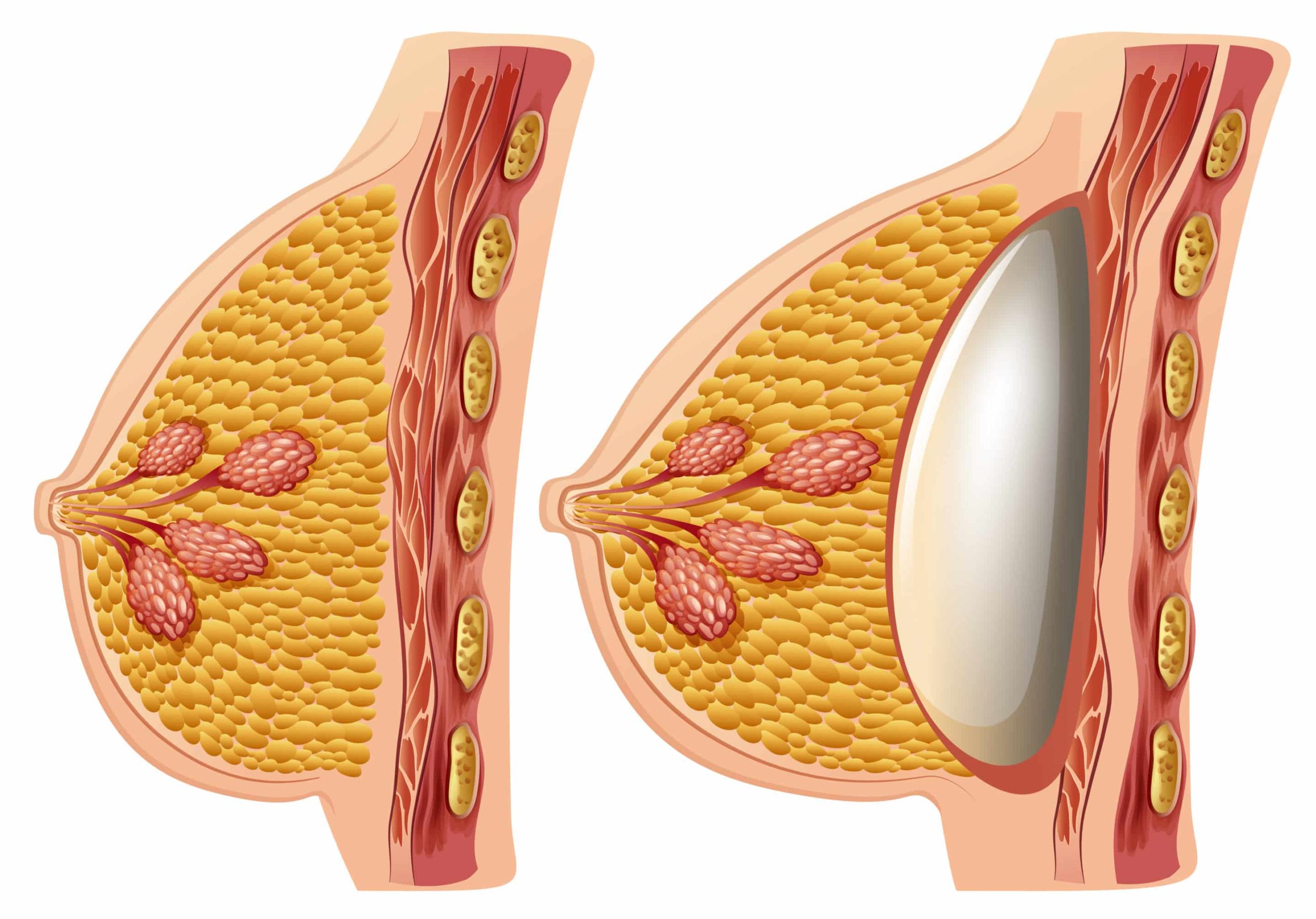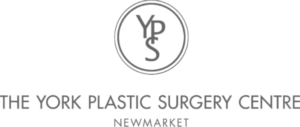Breast Augmentation Techniques: the Subfascial Pocket
What is the subfascial breast implant pocket and is it the best option? How do the results compare with other breast implant pockets? Plastic surgeons in Toronto, Newmarket and the GTA are always trying to innovate and modify their techniques to create the best breast augmentation results possible, while minimizing risks and complications. When doing a breast augmentation procedure, where the implant is placed within the chest tissues has a major impact on the final outcome.
Before discussing the subfascial breast implant pocket it is important to understand a few details about breast and chest anatomy. Deep to the breast, the pectoralis muscle is a wide thick muscle that covers much of the anterior chest and ribs. The pectoralis muscle is covered by a thin layer of tough connective tissue called fascia. When inserting breast implants the surgeon and patient have several choices about where to insert the implants In the different layers of the chest:
- Under the breast gland tissue alone (called a subglandular pocket)
- In a slightly deeper pocket, under the breast gland and the fascial connective tissue layer covering the pectoralis muscle (a subfascial pocket)
- In a significantly deeper pocket, where the implant is covered by the breast tissue, the pectoralis muscle and its fascia (called a subpectoral implant). Of note, there is an important variation of the subpectoral pocket called a dual plane pocket, in which the upper part of the implant is covered by muscle but the lower part of the implant is covered by breast tissue.
Each breast implant pocket has unique advantages and disadvantages. If an implant is inserted deep to the pectoralis muscle it is covered by a thicker layer of tissue, so not surprisingly there is a lower risk of seeing or feeling the edge of the implants. Implants also seem to be well-tolerated in this pocket, with a lower risk of capsular contracture. However, some patients (such as bodybuilders, patients with a large gap between their breasts or those with moderate sagging of the breasts) might not be good candidates for subpectoral breast implants. For reasons that would be discussed in more detail during a consultation, the subpectoral pocket is not always the best choice for all patients. For these patients, a pocket in front of the pectoralis muscle (either a subglandular or subfascial pocket) can still be considered.
Traditionally the subglandular pocket has been used for patients who want a more round “augmented” look to the upper breast or to help correct mild sagging. However, when implants are placed in front of the pectoralis muscle there is less tissue coverage, so there is an increased chance of seeing or feeling implant ripples. There also seems to be a higher risk of capsular contracture (a distorted, thick pocket around the implants).
The goal of the subfascial pocket is to provide some of the advantages of the subglandular pocket while minimizing the risks. First, the fascia adds more coverage over the implant. It is important to know that the fascia is a very thin layer so it only provides slightly more coverage of the implants. Second, the fascia tends to compress the upper part of the implant, providing a more gradual slope to the upper part of the breast. This is an advantage for people who don’t want as much roundness to the upper breast. Third, it is feasible that there might be a lower risk of capsular contracture or other complications with a subfascial pocket, although high quality, long-term comparative studies are still not available. On the other hand, the subfascial pocket takes slightly longer to create than the subglandular pocket and the fascia is tightly adherent to its muscle, so there can be more bleeding during the dissection.
In my experience I have achieved very good cosmetic outcomes with the subfascial pocket and have not found that increased bleeding is a major issue. However, I also have found that the difference in cosmetic results between the newer subfascial and traditional subglandular pockets to be subtle.
When choosing the best cosmetic breast surgeon for you, whether in Newmarket, York Region or elsewhere in Ontario, it is important to find a surgeon who is comfortable with a wide range of surgical techniques so they can customize the procedure to suit your goals.
Dr. Andrade has a 5 star rating on RateMDs and realself.com and his practice has a specialized focus on breast and body contouring surgeries. The York Plastic Surgery Centre is also one of the Top 10 Clinics in Canada with the volume of breast augmentation surgeries performed each year as noted by our implant supplier.



